Agricultural Products Lists
-
Control techniques of rape aphids
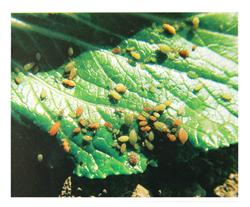
Aphids, commonly known as greasy insects, are the main insect pests of rape in Linxiang area, which occur in the main producing areas of rape. When the drought is serious in winter and spring, the insect pests are more serious in the plots lacking irrigation conditions. The harm of aphids mainly occurs in the period from bolting to maturity of rape, and some yield losses will be caused if the control is not timely or improper. First, rapeseed aphid.
2018-09-13 -
Broad-leaved weeds can be removed in rape growing period.
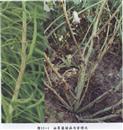
Sclerotinia sclerotiorum is one of the most important diseases in rape production, which may occur from seedling stage to maturity, especially in stem. Control methods: first, increase the application of phosphorus and potassium fertilizer, a small amount of nitrogen fertilizer, at the same time to open soil moisture to facilitate drainage, good seedlings, maintain reasonable density, spray paclobutrazol to improve lodging resistance, reasonable density.
2018-09-13 -
Prevention and control of striped jumping beetle of rapeseed
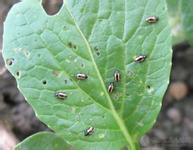
In recent years, yellow striped flea beetle has become another major pest in the seedling stage of rape in Hongta district. The insect can not only fly but also jump, so it is difficult to catch on the leaves. When disturbed, it jumps to the ground or the ditch near the field, and then flies back to the leaves to feed, often clustered on the back of the leaves to feed.
2018-09-13 -
Prevention and Control techniques of Peanut waterlogging
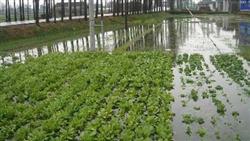
The occurrence of peanut waterlogging is due to low-lying terrain, heavy soil and poor drainage; second, in the season of long rainfall or excessive rainfall, there is excess surface water and groundwater, which can not be discharged temporarily. According to the characteristics of water requirement for peanut growth and development, the soil relative humidity at peanut seedling stage is 50%-60%.
2018-09-13 -
How to prevent and cure the rotten roots of peanuts?
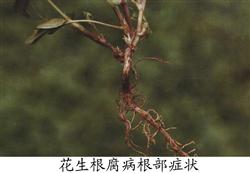
There are generally two reasons for peanut root rot: one is water stains, and the other is root rot. Prevention and control should first remove waterlogging, keep the ditch unblocked, and before sowing peanuts, coat the seeds with 10% Shile, and irrigate the roots with 1000 times of Luheng No. 1 or No. 2 after the disease, foliar spray is ineffective. Implement crop rotation and lighten the sick field.
2018-09-13 -
Heavy Control of Bacterial Wilt in Peanut Flowering and Needle Falling Stage
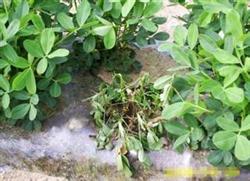
Peanut bacterial wilt is a devastating disease. Once infected, the whole plant dies and cannot be cured. During flowering and needle dropping period of peanut is the outbreak period of bacterial wilt, during which attention should be paid to spraying control. Specific control methods: When peanuts begin to bud, spray 1500 times 70% hymexiline solution on leaves every 10~15 days.
2018-09-13 -
Occurrence and Control techniques of Peanut Stem Rot
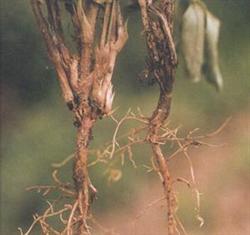
In recent years, the planting area of peanuts in our region has increased year by year, and peanut diseases have increased year by year, especially the harm of peanut stem rot has increased rapidly. According to the investigation and statistics, from 2001 to 2003, the incidence of the disease accounted for 89.6%, the rate of mild diseased plants was 10-20%, serious ones could reach more than 60%, and even died in pieces without harvest. ...
2018-09-13 -
Peanuts beware of early defoliation
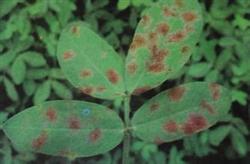
The early defoliation of peanut leaf spot disease in the later stage will seriously affect the yield of peanut, and the main cause of early defoliation of peanut in the later stage is the harm of plant premature senescence and leaf spot disease (net spot, brown spot, etc.). The peanut leaves that were sprayed with paclobutrazol and containing this component regulator were earlier and more severe. Therefore, prevent early peanuts.
2018-09-13 -
There are spots on the bottom leaves of peanuts. What's wrong with the curl of the upper leaves?
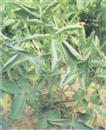
According to the preliminary diagnosis of mixed scab caused by leaf spot disease, it is recommended to spray carbendazim, methyl topiramate, Ami Miao, Shigao, Dakening, Amisida and so on. It is best to use the two agents alternately, once every 5 to 7 days, and 2 times in a row. At the same time, potassium dihydrogen phosphate was sprayed on the leaves.
2018-09-13 -
There is no pest when peanuts are mixed with seeds-chlorpyrifos
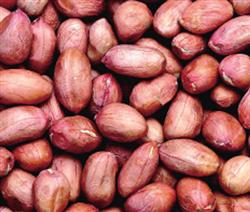
Peanut mixed with seed is pest-free-chlorpyrifos peanut mixed with non-pest is a kind of non-toxic, non-residual biological insecticide, which mainly acts on the nervous system of underground pests, causing metabolic disorder, hunger strike and death, especially sensitive to larvae. Seed dressing at one time can play a role in the soil for more than 130 days.
2018-09-13 -
Comprehensive control measures of white silk disease of peanut
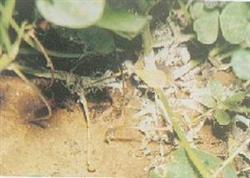
Peanut white silk disease is a kind of soil-borne fungal disease, which occurs at the stage of peanut pod expansion to maturity. After the damage to the root, pod and stem base of peanut, it first showed brown soft rot, white silky hyphae in the aboveground rhizome (so called white silk disease), and rape seed sclerotia, stem and leaf turned yellow, gradually withered, peanut pod.
2018-09-13 -
Opinions on the occurrence and control of Sclerotinia sclerotiorum in rape
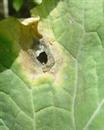
The growth period of rape this year is earlier than that of last year, and its growth is close to that of last year. The incidence characteristics of Sclerotinia sclerotiorum in rape this year are different from those in previous years. According to the comprehensive analysis of many factors, such as the source of bacteria in the field, the growth of rape, the disease resistance of varieties and the climatic conditions of susceptible growth period, the degree of natural occurrence is moderately prevalent. ...
2018-09-13 -
Double improvement of yield and quality in comprehensive prevention of peanut fruit rot
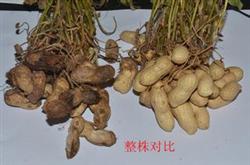
Peanut fruit rot is also known as "peanut rot disease". In recent years, the disease is more common in the main peanut producing areas in our province, such as Daming, Xinle, Dingzhou, Xingtang, Luan County and so on, especially when Rain Water is encountered in the podding period of continuous cropping for many years. The disease will be more serious. According to the survey, if the infected land is light, the yield will be reduced by 20%.
2018-09-13 -
How to prevent and cure peanut virus disease
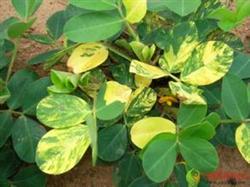
Flower disease, one of the main diseases of peanut, seriously affects the yield and quality of peanut, especially in the northern production areas of our country. Peanut virus disease, except bud blight mainly transmitted by thrips, other diseases such as light mottle disease, yellow mosaic disease and common mosaic disease are transmitted through seeds and aphids.
2018-09-13 -
How to control peanut bacterial wilt
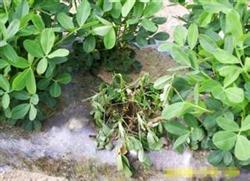
The period of peanut flowering and needle dropping is the outbreak period of peanut bacterial wilt, during this period, attention should be paid to spray control. Control method: when peanuts begin to show buds, spray 1500 times 70% carbendazim solution or 600 times 20% thiophanate copper solution on the leaves every 10 to 15 days, and spray all leaves evenly to begin to have water droplets.
2018-09-13 -
Four points should be grasped in the late stage of high yield of peanuts.
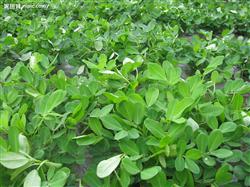
Peanut from 50% of the plants appeared full to most pods mature and harvested as its late growth stage. The growth characteristics of this period are as follows: the vegetative growth gradually declined and stopped, the pods became full gradually, and the increased fruit weight generally accounted for 500%-70% of the total fruit weight, which was the main period for the formation of pod yield. The technical measures of field management in this issue.
2018-09-13 -
Control of Peanut sheath Blight
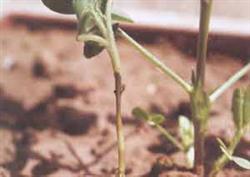
Peanut sheath blight generally began to occur in the first and middle of June. Comprehensive control measures are as follows: ditches should be opened for lower fields in order to remove stagnant water and lower water level, and peanuts on sloping land should also be ditched so that there is no stagnant water after rain. Increase the application of calcium and potassium fertilizer. After the initial flowering stage, combined with accumulated soil to cultivate the bed, 40% lime per mu is applied.
2018-09-13 -
Prevention and Control of Peanut net spot
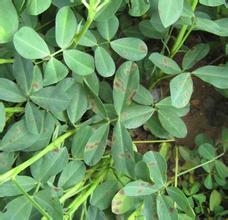
Peanut net spot, also known as brown spot and moire spot, often occurs mixed with leaf spot, which can cause early peanut leaf shedding and seriously affect peanut yield. The main results are as follows: first, the regular diseases begin to occur at the flowering stage, and the peak period is from podding to maturity, which mainly harms the leaves and produces round or irregular shapes along the main vein.
2018-09-13 -
Pest Control in Peanut growth
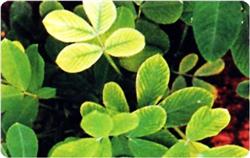
1. The cause of iron deficiency in peanut peanut is one of the crops sensitive to iron. Although iron is not a component of chlorophyll, it is an indispensable condition for the synthesis of chlorophyll. It is a component of cytochrome oxidase and peroxidase related to respiration, and participates in the redox process in plants. Is.
2018-09-13 -
Control techniques of Peanut bacterial Wilt and Stem Rot
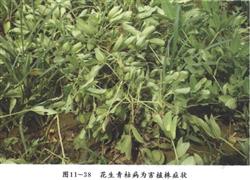
First, peanut bacterial wilt 1, symptoms. The disease of peanut bacterial wilt began to occur before and after flowering, but the disease was the most serious at the stage of flowering and needling, and the disease was alleviated after podding. The biggest symptoms are as follows: the upper leaves of the diseased plant withered rapidly, the vascular bundles of the underground roots turned brown, the longitudinal rhizomes, and the squeezed incisions were permeable when it was wet.
2018-09-13
